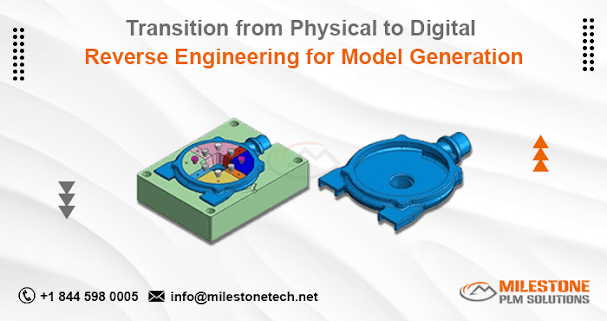Transition from Physical to Digital: Reverse Engineering for Model Generation
The physical world is brimming with objects, each with a story to tell. But how do we capture these stories and translate them into the digital realm? This is where reverse engineering comes in, a powerful technique that allows us to create digital models from physical objects. This transition from physical to digital unlocks a vast array of possibilities, from 3D printing and animation to historical preservation and virtual reality experiences.
The Art of Reverse Engineering
At its core, reverse engineering Involves taking apart a physical object to understand its design and functionality. Traditionally, this might involve manual processes like disassembly, measurement, and sketching. Today, technology offers a plethora of tools to streamline this process.
3D Scanning: These scanners capture the precise geometry of an object using lasers, structured light, or other techniques. The resulting point cloud data can then be used to create a detailed 3D model.
Photogrammetry: This technique uses multiple photographs of an object from different angles. Specialized software then analyzes these photos to reconstruct a 3D model. While less precise than 3D scanning, photogrammetry is often more affordable and accessible.
Computer Tomography (CT) Scanning: Primarily used in medical fields, CT scans can also be applied to non-destructive analysis of objects. By generating cross-sectional images, CT scans reveal internal structures that might be hidden from view.
Once the data is captured, software programs come into play. Computer-Aided Design (CAD) software allows users to manipulate the scanned data, clean up imperfections, and create precise digital representations. Additionally, specialized reverse engineering software can automate some of these processes, making them faster and more efficient.
The Power of Digital Models
The benefits of creating digital models from physical objects are numerous.
Preservation: Reverse engineering allows us to create digital archives of historical artifacts or endangered species. These digital models can be accessed and studied by researchers and enthusiasts around the world, helping to preserve our cultural heritage.
Rapid Prototyping: Imagine designing a product, printing a 3D model from the digital file, and testing it – all within a matter of hours. Reverse engineering facilitates rapid prototyping by creating a digital starting point for modifications and improvements. This can significantly accelerate the design and development process.
Animation and Virtual Reality (VR): The intricate details captured during reverse engineering create highly realistic digital models. These models can then be used in animation films or integrated into VR experiences, bringing the physical world to life in captivating ways.
Customization and Manufacturing: Digital models allow for easy customization. Imagine scanning a broken part of a machine and modifying the digital model to create a replacement part using 3D printing. This opens doors for on-demand manufacturing and personalized products.
Challenges and Considerations
While the advantages are evident, the transition from physical to digital presents some challenges.
Data Complexity: The complexity of the physical object directly affects the complexity of the digital model. Highly detailed objects or those with intricate textures might require extensive data capture and processing.
Software Skills: Effective utilization of reverse engineering software requires specific skills and expertise. Learning to operate these programs takes time and dedication.
Accuracy and Fidelity: The accuracy and fidelity of the digital model depend heavily on the chosen capture technology and the expertise of the user. Certain features of the physical object, like surface finish or material properties, might not translate perfectly to the digital realm.
The Future of Reverse Engineering
As technology continues to evolve, so will the capabilities of reverse engineering. We can expect advancements in areas like:
Automated Processing: Software with enhanced automation features could streamline the data capture and processing workflow, making reverse engineering more accessible.
AI-powered Reconstruction: Machine learning algorithms could assist in filling in missing data points or automatically smoothing imperfections in the scanned data, leading to even more accurate and detailed models.
Material Characterization: Emerging technologies might allow us to capture and translate not just the physical shape of an object, but also its material properties, paving the way for more realistic and functional digital replicas.
The transition from physical to digital through reverse engineering opens doors to a world of possibilities. As the technology continues to develop, we can expect even more innovative applications that blur the lines between the physical and digital worlds, enriching our understanding and interaction with everything around us.




Comments
Post a Comment